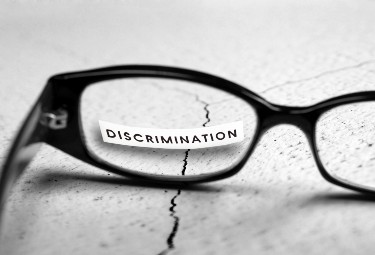
There are federal protections that protect individuals from discrimination in the workplace.
Your employer, or potential employer, has an obligation to prevent and address discrimination against employees. Multiple federal and state protections ensure that if discrimination occurs, victims may file a claim for this treatment.
For immediate assistance, please don’t hesitate to send our California employment discrimination attorneys an online message or call our firm at (818) 290-8904.
As a victim of workplace discrimination, understanding the form of discrimination experienced is a crucial element of your legal claim.
What Laws Protect Individuals from Discrimination?
A number of federal and state laws protect people from discrimination in the workplace.
Civil Rights Act of 1964
Title VII of the Civil Rights Act of 1964 prohibits employers from discriminating against individuals based on race, color, religion, sex, or national origin. Title VII prohibits an employer from discriminating with regard to any term, condition, or privilege of employment. Common employer practices such as hiring, terminating, disciplining, recruiting, assigning, evaluating, and training fall under Title VII.
Under Title VII, the parties covered include the following:
- All companies and labor unions employing over 15 employees,
- Employment agencies,
- State and local government, and
- Apprenticeship programs.
Independent contractors are not covered under Title VII.
Age Discrimination in Employment Act
The Age Discrimination in Employment Act (ADEA) protects employees or potential hires 40 years of age or older. The ADEA protections extend to workplace practices involving hiring, promotion, discharge, compensation, or terms, conditions, or privileges of employment. The ADEA is enforced by the Equal Employment Opportunity Commission.
California Fair Employment and Housing Act
In California, the Fair Employment and Housing Act prohibits discrimination against a number of protected classes, including:
- Race,
- Sex/Gender,
- National origin,
- Religion,
- Gender identity/gender expression,
- Sexual orientation,
- Marital status,
- Medical condition,
- Military or veteran status,
- National origin,
- Ancestry,
- Disability,
- Genetic information,
- Request for family care leave,
- Request for leave for an employee’s own serious health condition,
- Request for pregnancy disability leave, and
- Age (individuals over 40).
California’s FEHA provides even more expansive protection for individuals against discrimination than federal laws.
Disparate Treatment v. Disparate Impact
There are two forms of discrimination in the workplace: disparate treatment and disparate impact. An experienced California employment discrimination attorney can aid in analyzing evidence and building a case for the discrimination you’ve experienced.
Disparate Treatment
Disparate treatment is less favorable treatment of employees in a protected class. A disparate treatment claim argues that the individual suffered less favorable treatment than similarly situated individuals.
The basis for the less favorable treatment may be due to the individual’s race, religion, sex, color, or national origin. In disparate treatment claims, the employer’s intent is the matter at issue.
To support a disparate treatment claim, you need to establish four elements:
- The individual is a member of a protected class;
- The employer knows of the individual’s protected class;
- A harmful act occurred; and
- Other similarly situated individuals were treated more favorably or not subjected to the same treatment.
Disparate treatment examples include providing higher pay to men as opposed to women for the same job, offering overtime hours to white workers over minority workers, and accommodating religious observations of Christian employees but not Muslim or Jewish employees.
Determining whether your employer’s treatment constitutes discrimination requires the assistance of a qualified employment attorney.
Typically, disparate treatment claims concern three types of conduct related to employment and hiring. The three areas commonly associated with disparate treatment claims are failure to hire, termination, and terms and conditions of work.
Failure to Hire
Disparate treatment in failure to hire is evident through employer policies and practices.
Disparate treatment policies and practices purposely eliminate a protected group of individuals from the hiring process. Requiring all minority applicants to take an employment test while not requiring the same of non-minority applicants is an example of disparate treatment in hiring.
Another example is failing to interview individuals with non-white sounding names and continuing to post the vacant position despite applicants possessing the required qualifications for the position.
Termination
Termination cases arguing disparate treatment may be more challenging to prove. Certain elements must exist to establish that an individual’s termination was due to discrimination.
First, you must prove you are in a protected class. Second, you must show that you satisfied the expectations of your employer or that your employer set unfair standards for you compared to others. Third, you must have been replaced by an individual who is not a member of the same protected class.
For example, a white employee takes home office supplies and is told to return the items with no disciplinary action. The next week, a non-white employee takes supplies home and is subsequently fired. The non-white employee may have a case for disparate treatment if there is history of the employer’s conduct of treating other employees differently.
Terms and Conditions of Employment
Regarding the terms and conditions of employment, disparate treatment presents in many forms.
For example, a company policy may require the re-screening of employees. But if the company uses the policy to re-screen only Latino employees, then the intent of the policy discriminates on the basis of national origins—a protected class.
Another example would be a woman with years of experience is passed over for a promotion several times for men with substantially less experience.
Disparate Impact
By contrast with disparate treatment claims, in disparate impact claims, the employer’s intent is not at issue. Instead, the company’s policies and practices have discriminatory results.
Disparate impact discrimination results appear through hiring, promotion, and other employment decisions in a company. Although appearing neutral on their face, the consequences of these company practices negatively affect a protected class.
An example of disparate impact might include a company requiring applicants to answer questions that contain cultural nuances that an immigrant is unlikely to understand.
This requirement possesses the tendency to exclude people based on their national origin. Another example of disparate impact discrimination includes an all-white union’s requirement that new members be sponsored by an existing member.
Disparate impact claims are difficult to substantiate. These policies and practices do not often seem discriminatory against a protected class as they tend to be neutral on their face.
Disparate impact claims require the presentation of sufficient evidence, often time statistical evidence. From the evidence, a court can infer that discrimination occurred. Evidence must show the discriminatory disparate impact resulted from a specific company practice or policy.
The following elements are necessary to build a disparate impact claim:
- The employment policy or practice has a disparate effect on a certain group of individuals who are part of a protected class;
- The individual bringing the claim is a member of the protected class impacted;
- The disparate consequence experienced by the individual directly resulted from the employment policy or practice; and
- An alternative effective employment policy or practice exists that would be non-discriminatory.
There is a defense to a disparate impact claim: the employer must prove that a legitimate and non-discriminatory purpose exists for the contested policy or practice.
You can substantiate a disparate impact claim by proving that a policy has negative consequences for a particular class. For instance, suppose a company institutes a hiring policy requiring a strength test. A female applicant fails the strength test and is subsequently eliminated from the hiring process.
A disparate impact claim would argue that this hiring practice removes a majority of female applicants, who are a protected class.
Do You Need an Employment Lawyer?
Analyzing disparate impact vs. disparate treatment claims is complex. To prove a disparate impact or disparate treatment claim, you must secure evidence that strengthens your claim of discrimination.
If you believe you have been discriminated against in the California workplace, it’s important to document every event.
The attorneys at Workplace Rights Law possess over 75 years of combined experience in employment law. We understand the unique challenges presented by discrimination cases, specifically disparate treatment vs disparate impact cases.
With years of experience representing employers, we know the legal strategies of employers and know how to beat them.
No two cases are the same. We never employ cookie-cutter strategies. Each client’s story represents their own journey and requires different priorities.
We take more of our time and energy creating a strategy catered to the facts of your case because we believe all our clients deserve that attention and treatment.
Contact or call (818) 844-5200 to reach our experienced team of workplace discrimination lawyers today.
We offer free consultations for discrimination claims.
